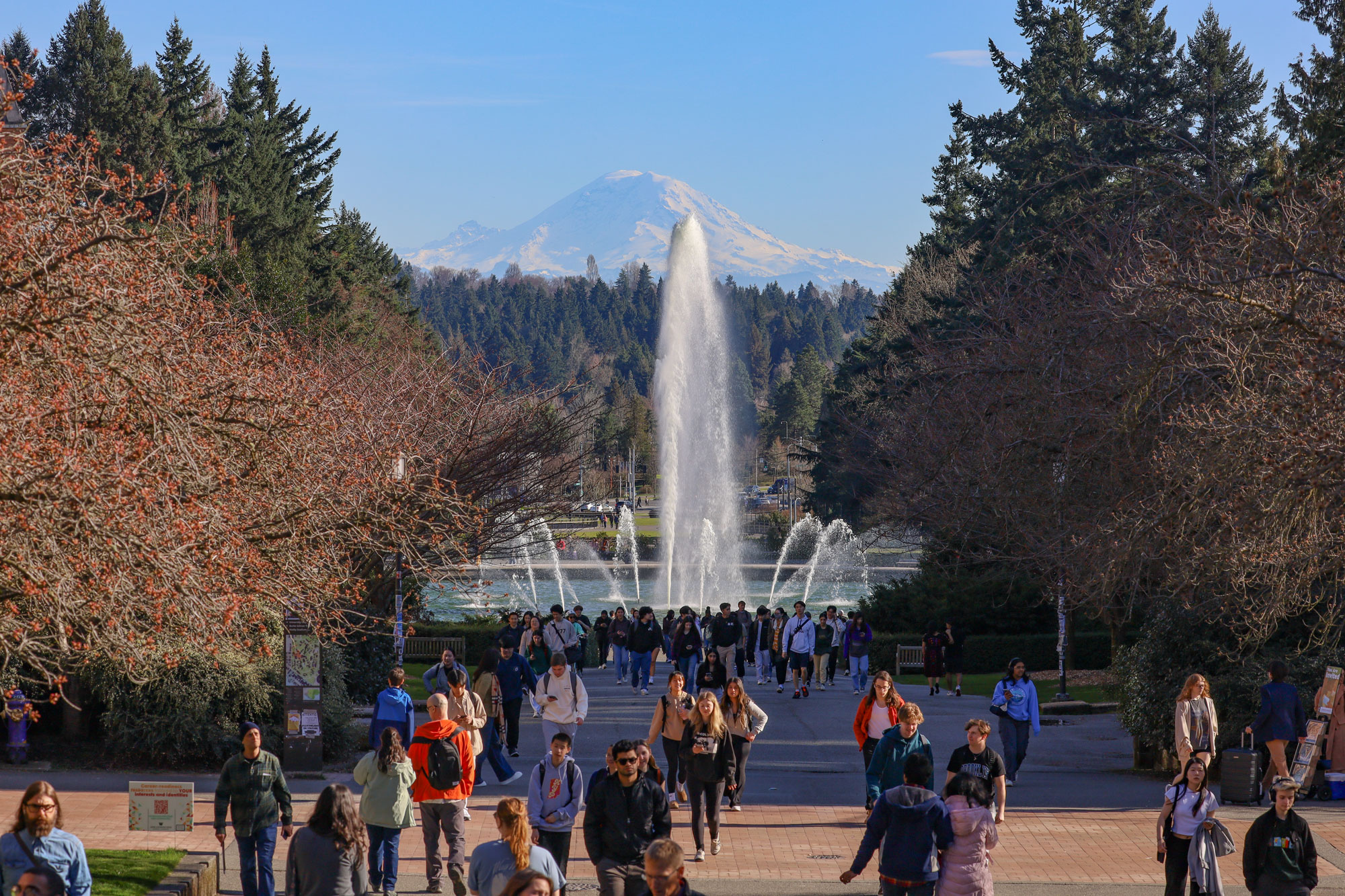UW is a powerhouse for the economy of Washington
The University of Washington generates almost $21 billion in annual economic impact for the state of Washington, according to a new report.

From campus to the Cascades and beyond, the UW’s economic impact has a ripple effect across the state of Washington.
Last year, the University of Washington generated more than $20.9 billion in economic impact for the state of Washington, up more than $5 billion from the last assessment, in 2018.
The UW recently hired a national consulting firm to examine and communicate how the public research university contributed to local and statewide economies. Parker Strategy Group, which does similar reports for institutions around the country, looked at the University’s records from 2023 and focused on areas including expenditures on operations, capital projects and wages, student spending off campus and what visitors to the UW spend when they’re here. University leaders use the report to show how the school—through education, research and community outreach—affects the state’s economy.
“I have done over 600 of these studies, a lot of them in higher education,” says Nichole Parker, the firm’s managing principal. “The University of Washington impact is the single largest impact that I calculate for one institution.
“It’s a big deal that it continues to increase,” Parker says, adding that considering COVID-19 and a downturn in support for higher education across the country, many institutions are not showing growth.
According to the Association of American Universities, research universities like the UW can be economic engines for the communities they serve. They promote innovation and entrepreneurship, enhance community development and draw research investment from the federal government and private sources. They should communicate their contributions in terms of the economy and larger socioeconomic context. The UW has an economic impact report every five years since 2009. “Reports like this one help us say directly to taxpayers and lawmakers that the investments you make in Washington are paying dividends,” says Natalie White, the director of events and communications for the UW’s Office of External Affairs.
Compared to other Big Ten schools and similar institutions, the UW ranks “up at the top of its peer comparisons,” says Parker. The headline news of the most recent report is that the University, the fifth largest employer in the state, sustains nearly 112,000 jobs and comprises 3.1 percent of the state’s economy, she says.
“What’s most impressive to look at is the UW’s research enterprise,” says Parker. “With $1.87 billion in sponsored research, this is a core strength for the University and the envy of many of my clients.”
UW Medicine, alone, provided an economic impact of $12.5 billion and supported and sustained more than 60,000 jobs. One of the new elements in the report is a break-out of the WWAMI (Washington, Wyoming, Alaska, Montana and Idaho) medical education program, which has a combined impact across all five states of $159 million due to operations, $117.3 million of which is just in the state of Washington. In 2023, the program trained 805 students who provided $170 million in economic impact. And 6,534 alumni currently practice throughout the region.
The report also provided a snapshot of UW alumni. Of the nearly 590,000 around the world, more than 375,000 live and work in Washington: that’s about one in every 10 workers in the state, Parker notes. “These graduates are generating $454.6 billion in economic activity” throughout their careers, she says. “They fulfill the promise of educating a skilled and smart workforce.”
The report shows how “we’re growing our impact over time,” White, of the UW, says. “That’s what our legislators want to hear, that they’re making an investment, and it’s making a difference over time.” It also allows the University to show how it contributes to local businesses and local economies. Yes, the UW hires staff and faculty. It also hires folks who work in construction, build our buildings, support events and symposia, she says. And it drives visits to the region.
“It is why cities want a college in town,” Parker says. “The visitor spending, the construction impacts, the good family sustaining jobs.” The $14.4 billion generated in the Seattle-Bellevue-Tacoma area and the nearly $21 billion statewide “is a huge impact … you all do a great job keeping as much money local as possible.”